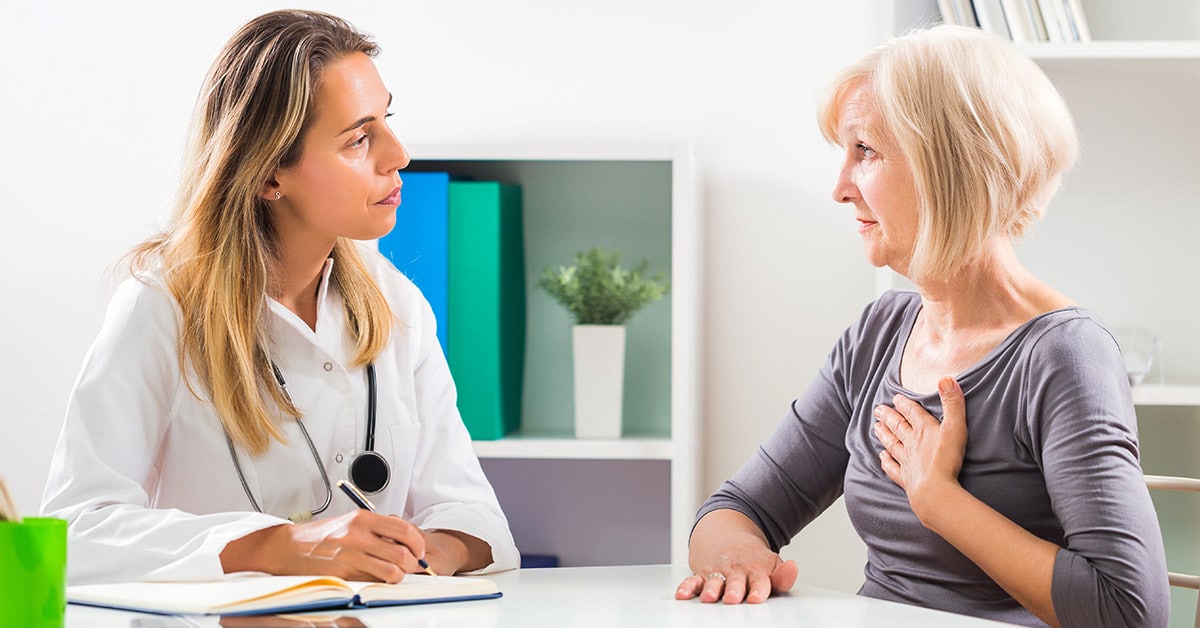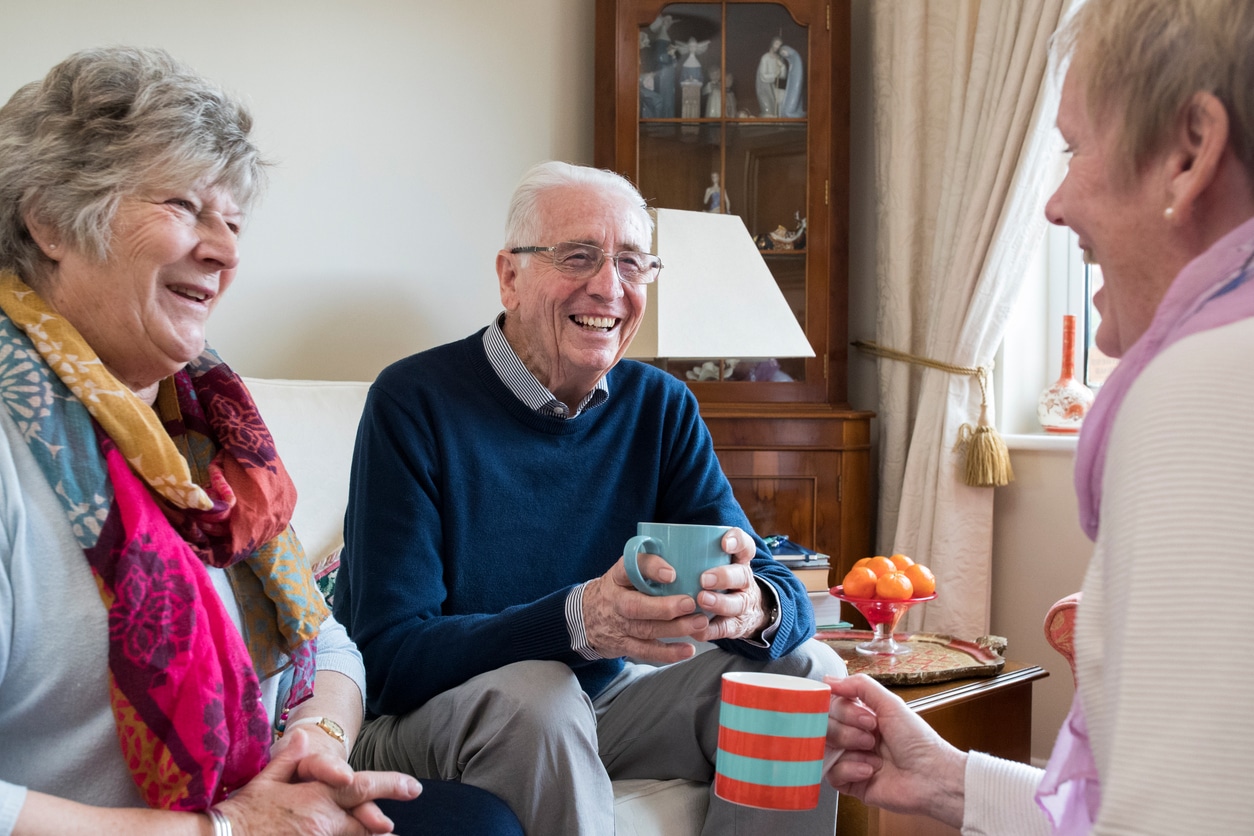Lung disease can affect much more than just your breathing. In fact, COPD and other chronic respiratory issues can cause shortness of breath. Not being able to breathe well depletes the oxygen levels in your blood, affecting your body’s ability to function properly.
What is COPD?
COPD stands for chronic obstructive pulmonary disease: a group of long-term lung diseases. These include chronic bronchitis (inflammation of the airways) and emphysema (damage affecting the air sacs at the end of the lung’s airways). These conditions make breathing difficult.
It’s estimated that around 30 million Americans are affected by COPD 1. In fact, it is the third biggest cause of disease-related death in the country. Many people are unaware that they even have the condition.
If left untreated though, COPD can lead to respiratory infections and heart issues. Thankfully, the condition can be prevented or alleviated by stopping smoking and reducing your exposure to air pollution and irritants, such as chemicals and dust.
What causes COPD?
Smoking is the main cause of COPD, with as much as 90% of all COPD cases being linked to tobacco. The longer you smoke, the higher your risk of developing COPD. You’re also more likely to get COPD if you have asthma and smoke. However, nonsmokers can also be diagnosed with the condition. Pollution and secondhand smoke in the environment can also cause COPD, as can exposure to dust, fumes, and chemicals.
Some people may also be genetically predisposed to a rare form of COPD called Alpha-1 deficiency-related emphysema. Around 5% of people with COPD are deficient in a protein known as alpha-1-antitrypsin 2. This deficiency can lead to other problems which can affect the lungs and liver.
COPD Symptoms
Many people don’t recognize the early symptoms of COPD. These include a mild but recurrent cough, shortness of breath and the feeling of needing to frequently clear your throat. This can often be mistaken as a cough, cold or just general signs of aging. However, these symptoms can also include:
- Shortness of breath during day-to-day activities, such as walking upstairs
- Chronic coughing
- Wheezing
- Tightness of the chest
- Regular production of mucus
- Frequent respiratory infections
- Fatigue and lack of energy
- Weight loss
- Blueness of fingernail beds or lips
- Swelling in legs, ankles, or feet
If you have any of these symptoms or suspect you may have COPD, you should see your doctor. The earlier you are diagnosed with COPD, the more successful your treatment will be.
COPD Diagnosis and Treatment
COPD symptoms can quickly become disabling, although most of them can be greatly reduced through treatment. Before treatment begins, however, a diagnosis must be made.
Differentiating between COPD and another respiratory issue requires a series of tests. These are to determine the health, function, and capacity of the lungs. When diagnosing COPD, Cleveland Clinic uses chest X-rays, blood gas testing, pulse oximetry monitoring, lung compliance and volume tests, cardiopulmonary stress tests, spirometry, and methacholine challenge tests.
According to the American Lung Association, each case of COPD is different, and no one treatment is right for everyone. The doctor will create a treatment plan based on symptoms, needs, and abilities. Fortunately, a variety of medications work well to combat COPD. These include corticosteroids, bronchodilators, and anti-cholinergic. If daily activities are greatly impaired due to reduced lung function, supplemental oxygen can be prescribed.
Seven Stress Management Tips for People with COPD
If you have COPD, there are several easy steps you can take to alleviate the effect of stress on your day-to-day life.
1. Exercise:
It’s no secret that regular exercise benefits not just your body but also your mood. You may be reluctant to exercise for fear of triggering an attack, but gentle exercises can help. Speak with your doctor about an exercise regime that can be right for you. If advised, sign up for a restorative yoga class or take slow walks outside.
2. Relaxation:
Basic relaxation techniques can significantly reduce stress. Audiobooks offer guided meditations and relaxation regimens that can help you “chill out.” You can also teach your muscles to relax by tensing and then releasing each muscle group, starting with your feet and moving up through the rest of your body.
3. Breathing Exercises:
Specialized breathing exercises have been devised specifically to help people with impaired breathing. Check your local library or the Internet for more information.
4. Improve Your Diet:
Cut back on empty calories like cake, cookies, and candy. Replace them with fresh fruits and vegetables and foods rich in fiber, vitamin D, and calcium.
5. Say No to Alcohol and Soda:
Beer and hard liquor are high in sugar, and carbonated beverages may also cause bloating. Stay healthier with natural drinks like spring water.
6. Seek Counseling:
If you find yourself feeling overwhelmed and emotionally burdened, seek out a counseling service. Working on the mind part of the “mind-body connection” is a way to feel better.
7. Strengthen Community Ties:
Stay in touch with your family. Contact old friends and look for new ones. Join a community group that interests you. If you have a computer, reach out through e-mail or social media like Facebook. If you don’t have a computer, you can always find one at your local library.
Resources on COPD
Resources exist for seniors and their caretakers to learn more and share their experiences. The American Lung Association runs an online support group for those with COPD, their caregivers, and their loved ones. Better Breathers Clubs offer both practical knowledge and emotional support.
It pays to keep a close eye on your health and to see a doctor any time you have concerns. COPD and other chronic diseases that affect the lungs and heart can have a huge impact on senior health, quality of life, and even independence.
Don’t disregard professional medical advice, or delay seeking it, because of what you read here.
This information is not intended as a substitute for professional consultation, diagnosis or treatment; it is provided “as is” without any representations or warranties, express or implied. Always consult a healthcare provider if you have specific questions about any medical matter and seek professional attention immediately if you think you or someone in your care may be experiencing a healthcare condition or medical emergency.
References:
- 1 https://www.healthline.com/health/copd
- 2 https://www.ncbi.nlm.nih.gov/pmc/articles/PMC3447047/
- https://www.lung.org/lung-health-diseases/lung-disease-lookup/copd
- https://www.copdfoundation.org/What-is-COPD/Understanding-COPD/Statistics.aspx
- https://www.lung.org/lung-health-diseases/lung-disease-lookup/copd/what-causes-copd
- https://www.healthline.com/health/copd#causes
- https://www.lung.org/lung-health-diseases/lung-disease-lookup/copd/symptoms-diagnosis
- https://www.healthline.com/health/copd#symptoms




